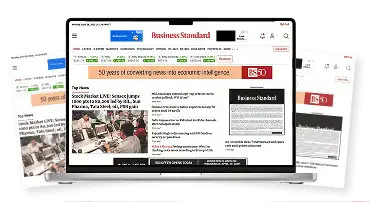Economic Survey 2024-25: Rural demand rises, urban sends mixed signals
It also noted that the impulse from rural demand is expected to continue in the second half of the financial year
Sharleen Dsouza Mumbai Private final consumption expenditure (PFCE) firmed up in the first half of FY25, growing by 6.7 per cent year-on-year (Y-o-Y) and indicators such as sales of two-wheelers, three-wheelers, and tractors signal rural demand contributed to growth in private consumption.
“This is also reflected in the January 2025 round of National Bank for Agriculture and Rural Development (Nabard’s) Rural Economic Conditions and Sentiments Survey, where 78.5 per cent of rural households reported an increase in their consumption expenditure during the last year,” the Survey said.
It said the impulse from rural demand was expected to continue in the second half of the financial year with returns from a bumper kharif crop and higher MSPs (minimum support prices) for a prospectively good rabi crop.
But, the Survey pointed out urban demand presented mixed trends.
It said the data from the Federation of Automobile Dealers Associations (FADA) showed growth in passenger vehicle sales slowed to 4.2 per Y-o-Y cent in April-November 2024 compared to 9.2 per cent in the corresponding period of the previous year.
It also said sales of fast-moving consumer goods (FMCG) in urban areas, according to Nielsen IQ, had recorded moderate growth in the first half this financial year.
On the other hand, air-passenger traffic in April-November 2024 saw a steady growth rate of 7.7 per cent.
“The 7.3 per cent YoY growth indicated by the First Advance Estimates for PFCE at constant prices for FY25 indicates a pick-up in the most recent months,” the Survey said.
While talking about an uptick in rural, the Survey pointed out the Household Consumption Expenditure Survey (HCES) 2023-24 highlighted a narrowing urban-rural gap in consumption expenditure.
“The average monthly per capita expenditure (MPCE) in rural and urban India in 2023-24 is estimated at Rs 4,122 and Rs 6,996, respectively. Considering the imputed values of items received free of cost through various social welfare programmes, these estimates rise to Rs 4,247 and Rs 7,078, respectively, for rural and urban areas,” it said.
The urban-rural gap in MPCE has declined to 71 per cent in 2022-23 from 84 per cent in 2011-12. It has further come down to 70 per cent in 2023-24, which confirms the sustained momentum of consumption growth in rural areas.
“As per the first advance estimates released by the National Statistical Office, Ministry of Statistics & Programme Implementation (MoSPI), the real gross domestic product (GDP) growth for FY25 is estimated to be 6.4 per cent. From the angle of aggregate demand in the economy, private final consumption expenditure at constant prices is estimated to grow by 7.3 per cent, driven by a rebound in rural demand,” the Survey said.
It also added that PFCE as a share of gross domestic product (at current prices) was estimated to increase from 60.3 per cent in FY24 to 61.8 per cent in FY25. This share is the highest since FY03.
FMCG companies have highlighted that urban consumption was moderate in their October-December earnings while rural demand has picked up.
On an analyst conference call after its earnings Rohit Jawa, chief executive officer and managing director at Hindustan Unilever, said: “Urban growth continues to moderate while gradual rural recovery is sustained.”
In a recent interview with Business Standard, Angshu Mallick, managing director and chief executive officer, Adani Wilmar, said, “The urban middle class is under pressure. There is financial stress, particularly in middle-income households.”
*Subscribe to Business Standard digital and get complimentary access to The New York TimesSubscribeRenews automatically, cancel anytime
Here’s what’s included in our digital subscription plans
Exclusive premium stories online
Complimentary Access to The New York Times

News, Games, Cooking, Audio, Wirecutter & The Athletic
Curated Newsletters

Insights on markets, finance, politics, tech, and more delivered to your inbox
Market Analysis & Investment Insights
Seamless Access Across All Devices










)

